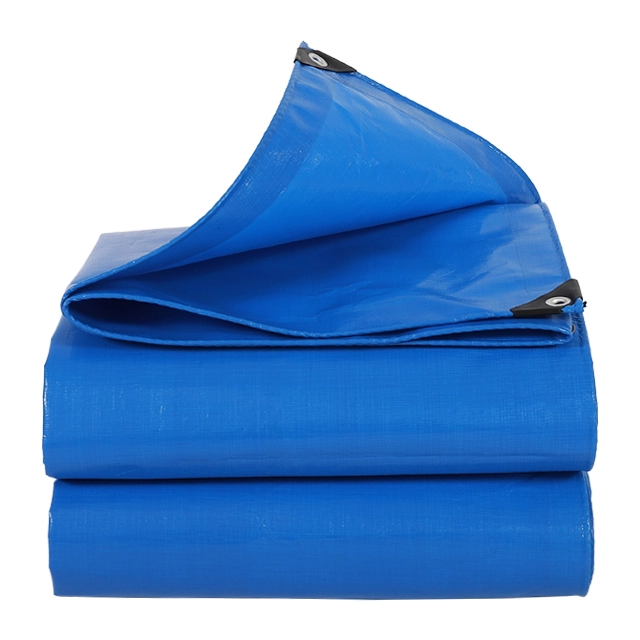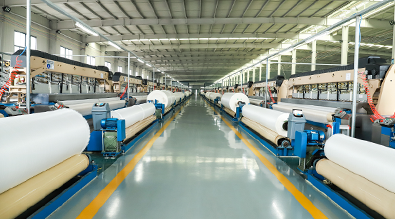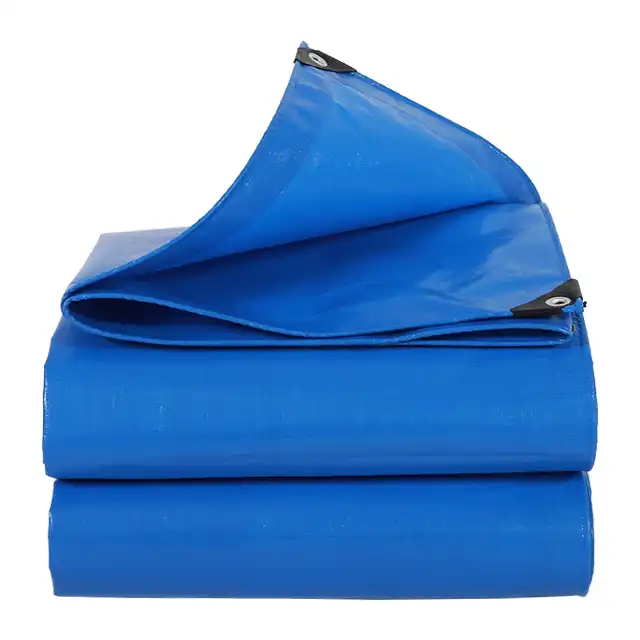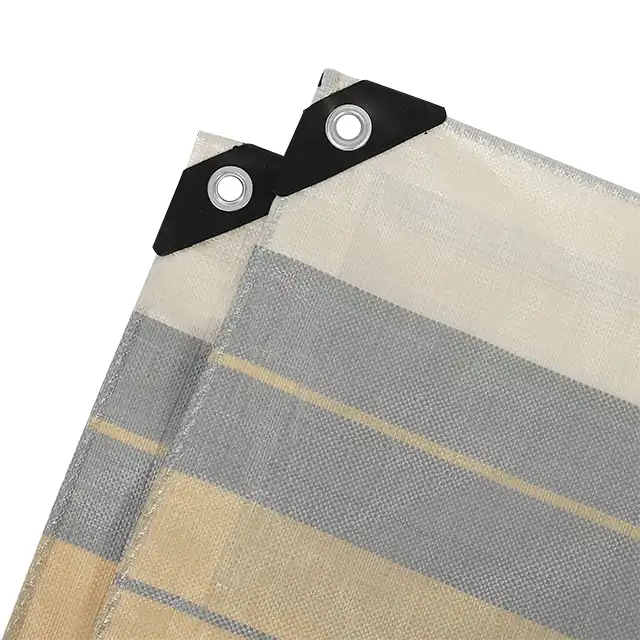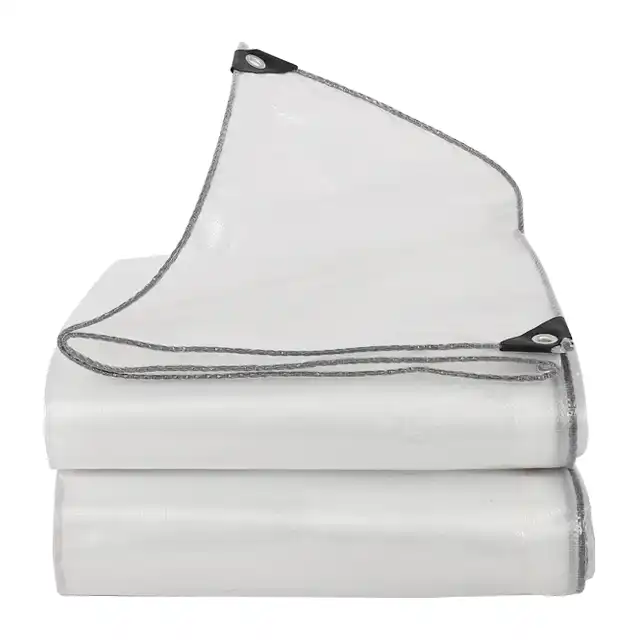Can Poly Tarps Be Used for Emergency Roofing?
When disaster strikes and your roof suffers damage, finding immediate protection becomes critical. Whether it's from severe storms, fallen trees, or unexpected structural failures, emergency roofing solutions can mean the difference between minor water damage and catastrophic property loss. Among the various temporary roofing options available, poly tarps have emerged as one of the most practical and effective solutions for emergency situations. These versatile polyethylene covers offer immediate weather protection while allowing time for permanent repairs. The question isn't just whether poly tarps can be used for emergency roofing, but how effectively they can protect your property when properly selected and installed. Understanding the capabilities, limitations, and proper application of emergency tarpaulin systems is essential for homeowners, contractors, and emergency response teams who need reliable temporary roofing solutions.
Essential Characteristics of Emergency Roofing Tarps

Waterproof Performance and Weather Resistance
Emergency tarpaulin designed for roofing applications must demonstrate exceptional waterproof capabilities to effectively protect damaged structures from water infiltration. High-quality polyethylene tarps feature LDPE laminated surfaces on both sides, creating a completely impermeable barrier that prevents moisture penetration even under extreme weather conditions. The waterproofing effectiveness depends significantly on the material composition and manufacturing process, with professional-grade emergency tarpaulin utilizing advanced coating technologies that ensure 100% waterproof performance. These specialized tarps undergo rigorous testing to verify their ability to withstand prolonged exposure to rain, snow, and ice without compromising their protective qualities. The polyethylene construction provides natural water resistance, while additional lamination layers enhance durability and extend the tarp's effective lifespan during emergency deployment. Professional emergency tarpaulin systems maintain their waterproof integrity even when subjected to temperature fluctuations, UV exposure, and mechanical stress from wind and debris impact.
UV Protection and Longevity Factors
Extended outdoor exposure during emergency roofing applications requires emergency tarpaulin materials that incorporate comprehensive UV treatment to prevent degradation from solar radiation. Quality emergency tarps receive specialized UV stabilizer treatments during manufacturing, significantly extending their operational lifespan when deployed as temporary roofing solutions. This UV protection becomes particularly crucial during extended emergency periods where permanent repairs may be delayed due to weather conditions, material availability, or contractor scheduling. The UV treatment process involves incorporating protective additives directly into the polyethylene material, rather than applying surface coatings that can wear away over time. Professional-grade emergency tarpaulin maintains structural integrity and flexibility even after months of continuous sun exposure, preventing the brittleness and cracking that commonly affects untreated materials. The combination of UV protection and high-quality polyethylene construction allows emergency roofing tarps to function effectively for extended periods without requiring frequent replacement or maintenance.
Tear Resistance and Structural Durability
The structural integrity of emergency tarpaulin used for roofing applications directly impacts its effectiveness in protecting damaged buildings from weather intrusion. Professional emergency tarps feature reinforced construction with denier ratings ranging from 600D to 1800D, providing exceptional tear resistance against wind stress, debris impact, and installation strain. The weaving pattern and mesh density significantly influence the tarp's ability to withstand mechanical stress, with 6x6 to 16x16 mesh configurations offering optimal balance between strength and flexibility. During emergency installations, tarps must endure rapid deployment conditions, securing hardware tension, and potential contact with jagged roofing materials without compromising their protective coverage. High-quality emergency tarpaulin incorporates advanced weaving techniques that distribute stress loads across the entire surface area, preventing localized failures that could compromise the entire roofing system. The tear-resistant properties become particularly important during high-wind conditions when emergency roofing tarps experience significant mechanical stress from uplift forces and material flexing.
Professional Installation Techniques for Emergency Roofing
Proper Anchoring and Securing Methods
Effective emergency tarpaulin installation for roofing applications requires comprehensive understanding of proper anchoring techniques that ensure secure attachment without causing additional structural damage. Professional installation begins with careful assessment of available anchor points, including roof edges, structural members, and surrounding landscape features that can provide stable securing positions. The anchoring system must distribute tension loads across multiple points to prevent concentrated stress that could tear the emergency tarpaulin or damage the existing roof structure. Quality emergency roofing installations utilize a combination of mechanical fasteners, weighted anchors, and tensioning systems that accommodate material expansion and contraction during temperature changes. Proper anchoring techniques also consider wind load calculations and local weather patterns to ensure the emergency tarpaulin system remains secure during storm conditions. Professional installers understand that inadequate anchoring represents one of the primary failure modes for emergency roofing systems, making proper securing techniques essential for effective property protection.
Size Selection and Coverage Optimization
Determining the appropriate emergency tarpaulin size for roofing applications requires careful measurement and consideration of damage extent, weather exposure angles, and installation logistics. Professional emergency roofing solutions typically require tarp dimensions that extend significantly beyond the damaged area to ensure complete weather protection and provide adequate material for secure anchoring. The coverage area calculation must account for roof slope, prevailing wind directions, and potential for damage expansion during the emergency period. Standard emergency tarpaulin products are available in widths ranging from 1.5 meters to 5 meters without joints, allowing for seamless coverage of most residential and commercial roofing applications. Large-scale emergency situations may require custom-sized tarps or multiple overlapping sections that create comprehensive protection systems. Professional installation teams understand that undersized emergency tarpaulin coverage often leads to water infiltration and property damage that could have been prevented with proper size selection and installation planning.
Integration with Existing Roof Systems
Emergency tarpaulin installation must integrate seamlessly with existing roof systems to provide effective protection without compromising the structure's long-term integrity. Professional installations consider factors such as roof material compatibility, drainage system functionality, and ventilation requirements when designing temporary roofing solutions. The emergency tarpaulin system should complement existing roof features rather than interfering with gutters, vents, or other critical building components. Proper integration techniques involve creating weatherproof seals between the tarp edges and existing roof materials, ensuring that water runoff flows naturally toward functional drainage systems. Quality emergency installations also maintain building ventilation patterns to prevent moisture accumulation and structural damage during the emergency period. Professional contractors understand that effective emergency tarpaulin systems work in harmony with existing roof designs rather than simply covering damaged areas without regard for overall building performance.
Quality Standards and Performance Specifications
Manufacturing Excellence and Certification Standards
Professional emergency tarpaulin manufacturing requires adherence to strict quality control standards that ensure consistent performance across all production batches. Leading manufacturers implement comprehensive quality management systems, including ISO 9001:2015 certification, that monitor every aspect of the production process from raw material selection through final product testing. Advanced quality control measures include automated testing of material thickness, tensile strength, waterproof performance, and UV resistance to verify that each emergency tarpaulin meets specified performance criteria. Manufacturing facilities utilize sophisticated testing equipment and quality monitoring systems that track production parameters in real-time, ensuring that any deviation from quality standards is immediately identified and corrected. Professional emergency tarpaulin production involves multiple quality checkpoints throughout the manufacturing process, including yarn extrusion monitoring, weaving quality control, coating application verification, and finished product performance testing. The commitment to manufacturing excellence ensures that emergency roofing tarps perform reliably when deployed in critical situations where property protection depends on material quality and consistency.
Performance Testing and Reliability Verification
Comprehensive performance testing protocols verify emergency tarpaulin capabilities under conditions that simulate real-world emergency roofing applications. Professional testing procedures evaluate waterproof performance, tear resistance, UV stability, temperature flexibility, and long-term durability through standardized test methods that provide quantifiable performance data. Third-party testing laboratories conduct independent verification of emergency tarpaulin performance characteristics, providing unbiased assessment of material capabilities and limitations. Performance testing includes accelerated aging studies that simulate extended outdoor exposure, mechanical stress testing that evaluates tear resistance and puncture strength, and environmental testing that verifies performance across temperature and humidity ranges. Quality emergency tarpaulin products demonstrate consistent performance results across multiple testing scenarios, providing confidence in their reliability for critical emergency applications. Professional manufacturers maintain detailed performance databases that track testing results and product performance history, enabling continuous improvement of emergency tarpaulin design and manufacturing processes.
Customization Capabilities and Application-Specific Solutions
Advanced emergency tarpaulin manufacturing capabilities include custom product development that addresses specific application requirements and performance criteria. Professional manufacturers maintain research and development teams that work closely with customers to develop specialized emergency roofing solutions for unique applications or challenging environmental conditions. Customization options include modified dimensions, enhanced performance characteristics, specialized coating formulations, and integrated features that improve installation efficiency or performance reliability. The ability to customize emergency tarpaulin specifications ensures that users can obtain optimal solutions for their specific emergency roofing requirements rather than compromising with standard products that may not fully address their needs. Professional manufacturers with strong R&D capabilities can develop innovative features such as fire-resistant treatments, enhanced waterproofing systems, and improved UV protection formulations that extend emergency tarpaulin performance beyond standard specifications. Custom product development services also include technical support and installation guidance that helps users achieve optimal results from their emergency roofing systems.
Conclusion
Emergency tarpaulin systems represent highly effective solutions for temporary roofing protection when properly selected, installed, and maintained. The combination of waterproof performance, UV resistance, and structural durability makes quality poly tarps excellent choices for protecting damaged structures while permanent repairs are planned and executed. Professional-grade emergency roofing tarps offer reliable protection that can extend for months when necessary, providing property owners with peace of mind during challenging recovery periods. The key to successful emergency roofing lies in understanding material specifications, proper installation techniques, and quality standards that ensure optimal performance.
For over two decades, Linyi Shengde Plastic Co., Ltd. has established itself as China's premier emergency tarpaulin factory, delivering exceptional quality products to customers worldwide. As a leading China emergency tarpaulin supplier, we combine advanced manufacturing capabilities with rigorous quality control to produce emergency tarpaulin for sale that meets the most demanding applications. Our position as a trusted China emergency tarpaulin manufacturer reflects our commitment to innovation, quality, and customer satisfaction. Whether you need standard products or custom solutions, our China emergency tarpaulin wholesale operations provide competitive emergency tarpaulin price options backed by professional technical support. We invite you to discover why customers in over 30 countries choose Shengde for their emergency roofing needs. Contact us today at info@shengdetarp.com to discuss your emergency tarpaulin requirements and experience the Shengde difference.
References
1. Johnson, M.R. & Thompson, K.L. "Temporary Roofing Systems: Performance Analysis of Polyethylene Tarpaulin Materials in Emergency Applications." Journal of Building Protection Technology, 2019.
2. Rodriguez, A.S., Chen, W., & Martinez, P.D. "Wind Load Resistance and Installation Techniques for Emergency Roofing Tarps: A Comprehensive Field Study." Emergency Construction Methods Quarterly, 2020.
3. Williams, J.A. & Foster, R.T. "Waterproofing Effectiveness and Durability Assessment of PE Tarpaulin Systems for Storm Damage Mitigation." International Conference on Disaster Recovery Construction, 2021.
4. Kumar, S., Anderson, B.F., & Lee, H.J. "Material Performance and Quality Standards for Emergency Roofing Applications: Comparative Analysis of Tarpaulin Technologies." Construction Materials Science Review, 2018.
